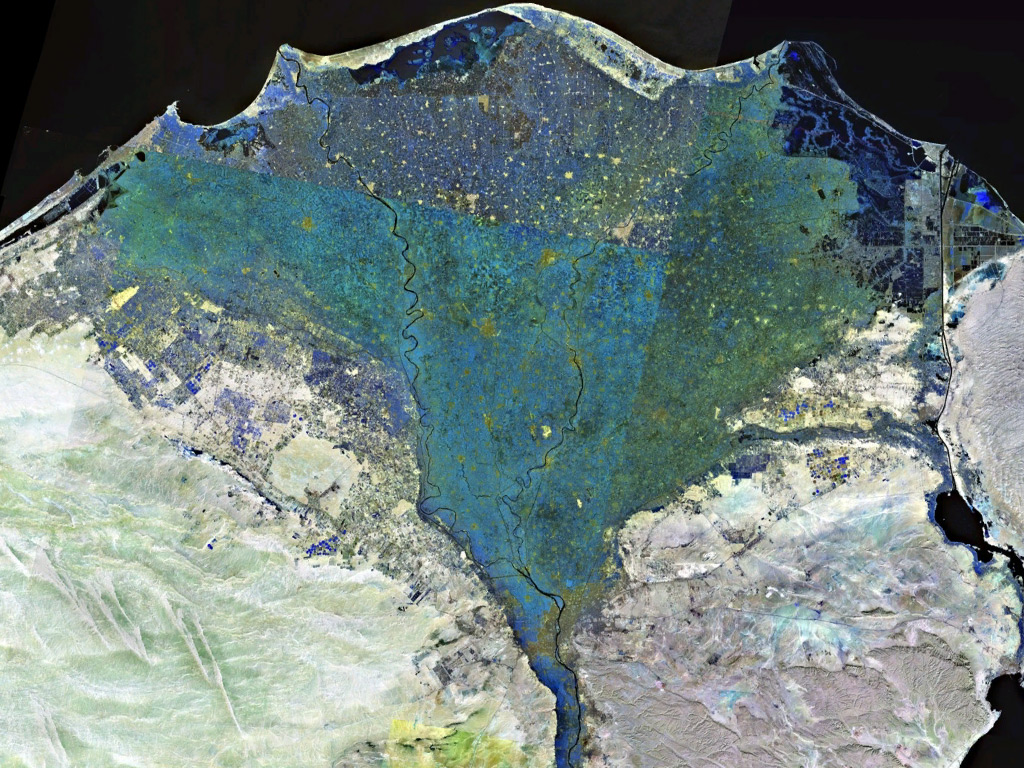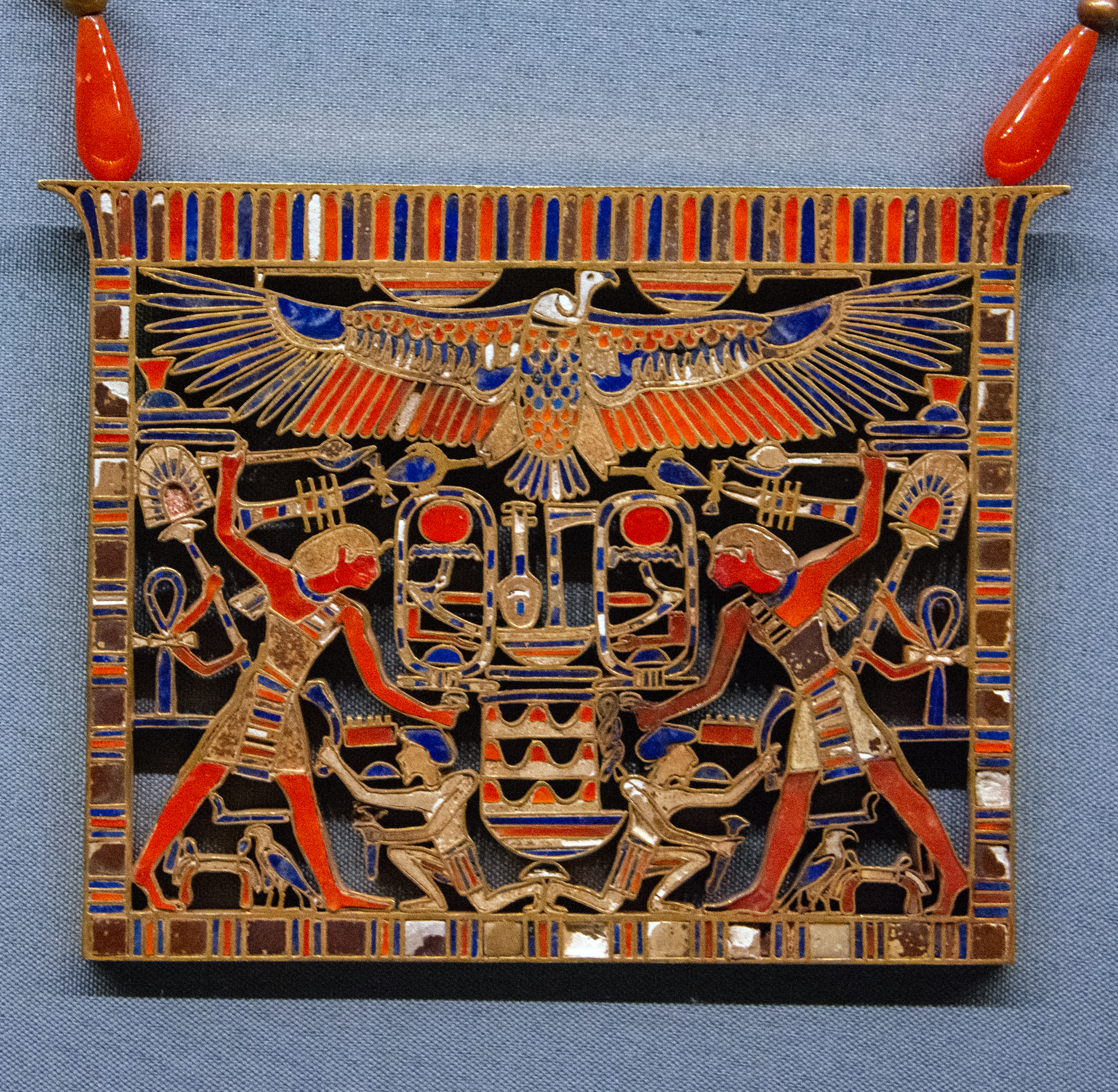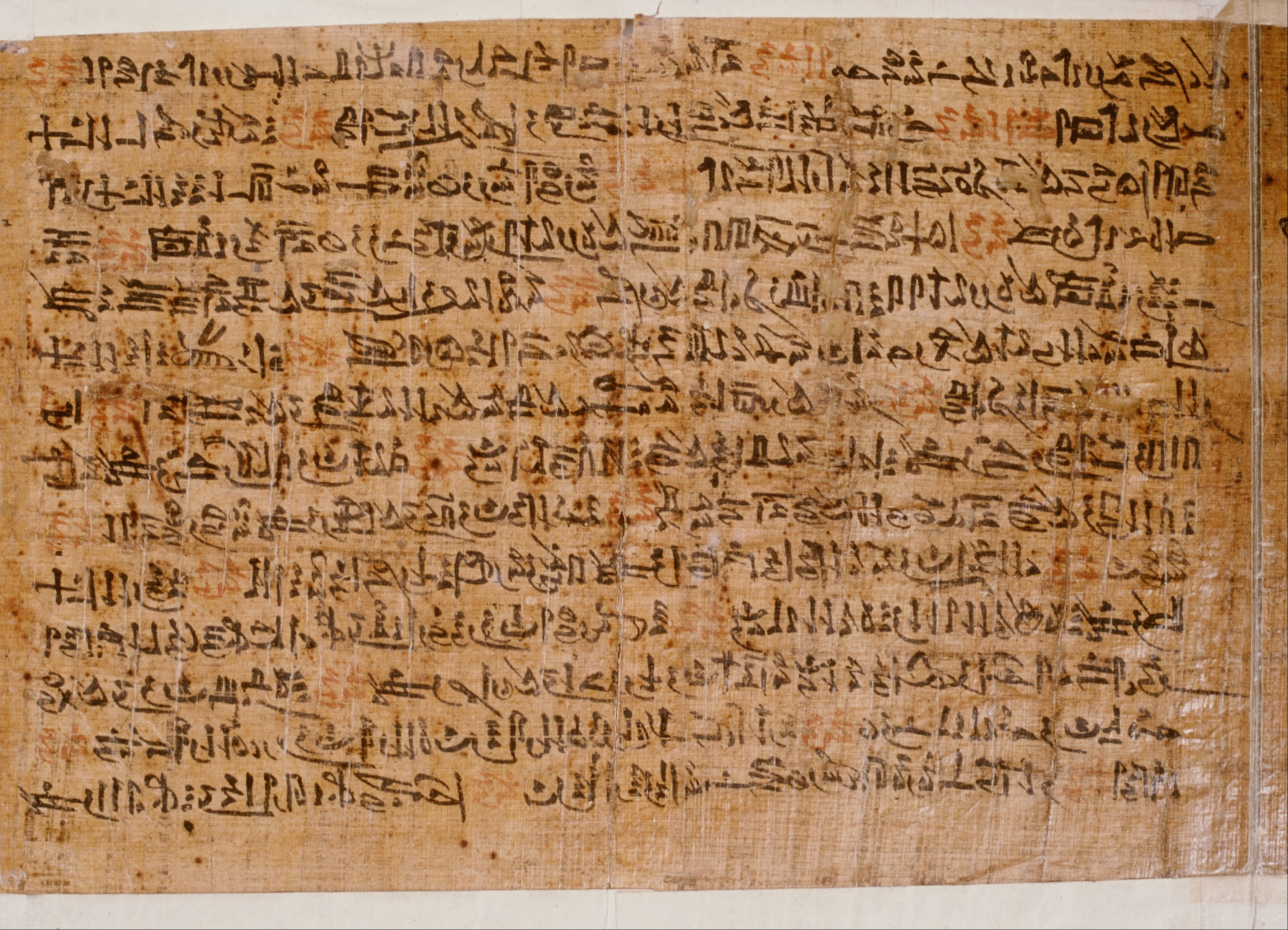|
Kom El-Hisn
Kom el-Hisn ( ') is a Nile Delta settlement dating back to the Old Kingdom of Egypt with parts dating to the Middle Kingdom of Egypt, Middle Kingdom. Its location in the 3rd Nome (Egypt), nome of Lower Egypt, or "House of the Lord of Ships (pr nb jmu)", focus on the goddess Hathor, as well as faunal and textual evidence suggests it played a role in transporting cattle between regions. Whether or not it was a self-sufficient town or built solely to support the temple is currently unknown. The site's main findings include the Tomb of Khesuwer, a large necropolis, and a temple dedicated to Sekhmet-Hathor. Inscriptions designating Hathor as the "Mistress of Imu", among other similar inscriptions, and the location of Kom el-Hisn have given evidence to the site being the former nome capital Yamu, or Imu. Much of the information on this site from previous excavations is lost or remains unpublished. Excavation history The site was initially uncovered by Flinders Petrie during his exca ... [...More Info...] [...Related Items...] OR: [Wikipedia] [Google] [Baidu] |
Nile Delta
The Nile Delta (, or simply , ) is the River delta, delta formed in Lower Egypt where the Nile River spreads out and drains into the Mediterranean Sea. It is one of the world's larger deltas—from Alexandria in the west to Port Said in the east; it covers of the Mediterranean coastline and is a rich agricultural region. From north to south the delta is approximately in length. The Delta begins slightly down-river from Cairo. Geography From north to south, the delta is approximately in length. From west to east, it covers some of coastline. The delta is sometimes divided into sections, with the Nile dividing into two main distributary, distributaries, the Damietta and the Rosetta, flowing into the Mediterranean at port cities with the same names. In the past, the delta had several distributaries, but these have been lost due to flood management, flood control, silting and changing relief. One such defunct distributary is Wadi Tumilat. The Suez Canal is east of the delta ... [...More Info...] [...Related Items...] OR: [Wikipedia] [Google] [Baidu] |
Amenemhat III
:''See Amenemhat, for other individuals with this name.'' Amenemhat III (Ancient Egyptian: ''Ỉmn-m-hꜣt'' meaning 'Amun is at the forefront'), also known as Amenemhet III, was a pharaoh of ancient Egypt and the sixth king of the Twelfth Dynasty of the Middle Kingdom. He was elevated to throne as co-regent by his father Senusret III, with whom he shared the throne as the active king for twenty years. During his reign, Egypt attained its cultural and economic zenith of the Middle Kingdom. The aggressive military and domestic policies of Senusret III, which re-subjugated Nubia and wrested power from the nomarchs, allowed Amenemhat III to inherit a stable and peaceful Egypt. He directed his efforts towards an extensive building program with particular focus on Faiyum. Here he dedicated a temple to Sobek, a chapel to Renenutet, erected two colossal statues of himself in Biahmu, and contributed to excavation of Lake Moeris. He built for himself two pyramids at Dahshur and Ha ... [...More Info...] [...Related Items...] OR: [Wikipedia] [Google] [Baidu] |
Archaeological Sites In Egypt
Archaeology or archeology is the study of human activity through the recovery and analysis of material culture. The archaeological record consists of artifacts, architecture, biofacts or ecofacts, sites, and cultural landscapes. Archaeology can be considered both a social science and a branch of the humanities. It is usually considered an independent academic discipline, but may also be classified as part of anthropology (in North America – the four-field approach), history or geography. The discipline involves surveying, excavation, and eventually analysis of data collected, to learn more about the past. In broad scope, archaeology relies on cross-disciplinary research. Archaeologists study human prehistory and history, from the development of the first stone tools at Lomekwi in East Africa 3.3 million years ago up until recent decades. Archaeology is distinct from palaeontology, which is the study of fossil remains. Archaeology is particularly important for learn ... [...More Info...] [...Related Items...] OR: [Wikipedia] [Google] [Baidu] |
List Of Ancient Egyptian Towns And Cities
This is a list of known ancient Egyptian towns and cities. http://www.ucl.ac.uk/. Retrieved on 2016-03-05. The list is for sites intended for permanent settlement and does not include fortresses and other locations of intermittent habitation. Lower Egypt Upper Egypt Nubia Red Sea Coast See also * Nome (Egypt), NomeReferences {{Portal bar, Ancient Egypt Archaeological sites in Egypt, List Ancient Egypt-related lists, Towns and cities Cities in ancient Egypt, List Lists of cities by country, Egypt ...[...More Info...] [...Related Items...] OR: [Wikipedia] [Google] [Baidu] |
Foundation Deposit
Foundation deposits are the archaeological remains of the ritual burial of materials under the foundations of buildings. Ancient Egypt In the case of Ancient Egypt, foundation deposits took the form of ritual mudbrick lined pits or holes dug at specific points under temples or tombs, which were filled with ceremonial objects, usually amulets, scarabs, food, or ritual miniature tools, and were supposed to prevent the building from falling into ruin. Examples File:Foundation nail IMG 0073-black.jpg, Foundation nail dedicated by Gudea to Ningirsu. File:Fenestrated axehead-AO 24447-P5280206-gradient.jpg, Fenestrated silver axehead, Middle Bronze Age, found near Byblos See also * Builders' rites * Cornerstone A cornerstone (or foundation stone or setting stone) is the first stone set in the construction of a masonry Foundation (engineering), foundation. All other stones will be set in reference to this stone, thus determining the position of the entir ... * Cyrus Cylinder Re ... [...More Info...] [...Related Items...] OR: [Wikipedia] [Google] [Baidu] |
6th Dynasty
The Sixth Dynasty of ancient Egypt (notated Dynasty VI), along with the Third, Fourth and Fifth Dynasty, constitutes the Old Kingdom of Dynastic Egypt. History The Sixth Dynasty is considered by many authorities as the last dynasty of the Old Kingdom, although ''The Oxford History of Ancient Egypt'' includes Dynasties VII and VIII as part of the Old Kingdom. Manetho writes that these kings ruled from Memphis, since their pyramids were built at Saqqara, very close one to another. By the Fifth Dynasty, the religious institution had established itself as the dominant force in society; a trend of growth in the bureaucracy and the priesthood, and a decline in the pharaoh's power had been established during Neferirkare Kakai's reign. During Djedkare Isesi's rule, officials were endowed with greater authority—evidenced by the opulent private tombs they constructed—eventually leading to the creation of a feudal system in effect. These established trends—decentralization of ... [...More Info...] [...Related Items...] OR: [Wikipedia] [Google] [Baidu] |
Roman Egypt
Roman Egypt was an imperial province of the Roman Empire from 30 BC to AD 642. The province encompassed most of modern-day Egypt except for the Sinai. It was bordered by the provinces of Crete and Cyrenaica to the west and Judaea, later Arabia Petraea, to the East. Egypt was conquered by Roman forces in 30 BC and became a province of the new Roman Empire upon its formation in 27 BC. Egypt came to serve as a major producer of grain for the empire and had a highly developed urban economy. It was by far the wealthiest Roman province outside of Italy. The population of Roman Egypt is unknown, although estimates vary from . Alexandria, its capital, was the largest port and second largest city of the Roman Empire. Three Roman legions garrisoned Egypt in the early Roman imperial period, with the garrison later reduced to two, alongside formations of the Roman army. The major town of each '' nome'' (administrative region) was known as a metropolis and gr ... [...More Info...] [...Related Items...] OR: [Wikipedia] [Google] [Baidu] |
First Intermediate Period
The First Intermediate Period, described as a 'dark period' in ancient Egyptian history, spanned approximately 125 years, c. 2181–2055 BC, after the end of the Old Kingdom of Egypt, Old Kingdom. It comprises the seventh Dynasty, Seventh (although this is mostly considered spurious by Egyptologists), eighth dynasty of Egypt, Eighth, Ninth dynasty of Egypt, Ninth, Tenth dynasty of Egypt, Tenth, and part of the Eleventh dynasty of Egypt, Eleventh List of Egyptian dynasties, Dynasties. The Periodization of Ancient Egypt, concept of a "First Intermediate Period" was coined in 1926 by Egyptologists Georg Steindorff and Henri Frankfort. Very little monumental evidence survives from this period, especially from the beginning of the era. The First Intermediate Period was a dynamic time in which rule of Egypt was roughly equally divided between two competing power bases. One of the bases was at Herakleopolis Magna, Heracleopolis in Lower Egypt, a city just south of the Faiyum region, and ... [...More Info...] [...Related Items...] OR: [Wikipedia] [Google] [Baidu] |
Upper Egypt
Upper Egypt ( ', shortened to , , locally: ) is the southern portion of Egypt and is composed of the Nile River valley south of the delta and the 30th parallel North. It thus consists of the entire Nile River valley from Cairo south to Lake Nasser (formed by the Aswan High Dam). Name In ancient Egypt, Upper Egypt was known as ''tꜣ šmꜣw'', literally "the Land of Reeds" or "the Sedgeland", named for the sedges that grow there. In Biblical Hebrew it was known as and in Akkadian it was known as . Both names originate from the Egyptian '' pꜣ- tꜣ- rsj'', meaning "the southern land". In Arabic, the region is called Sa'id or Sahid, from صعيد meaning "uplands", from the root صعد meaning to go up, ascend, or rise. Inhabitants of Upper Egypt are known as Sa'idis and they generally speak Sa'idi Egyptian Arabic. Geography Upper Egypt is between the Cataracts of the Nile beyond modern-day Aswan, downriver (northward) to the area of El-Ayait, which places modern- ... [...More Info...] [...Related Items...] OR: [Wikipedia] [Google] [Baidu] |
White Crown
Hedjet () is the White Crown of pharaonic Upper Egypt. After the unification of Upper and Lower Egypt, it was combined with the Deshret, the Red Crown of Lower Egypt, to form the Pschent, the double crown of Egypt. The symbol sometimes used for the White Crown was the vulture goddess Nekhbet shown next to the head of the cobra goddess Wadjet, the uraeus on the Pschent. History The white crown, along with the red crown, has a long history with each of their respective representations going back into the Predynastic Period, indicating that kingship had been the base of Egyptian society for some time. The earliest image of the hedjet was thought to have been in the Qustul in Nubia. According to Jane Roy, "At the time of Williams’ argument, the Qustul cemetery and the ‘royal’ iconography found there was dated to the Naqada IIIA period, thus antedating royal cemeteries in Egypt of the Naqada IIIB phase. New evidence from Abydos, however, particularly the excavation of Cem ... [...More Info...] [...Related Items...] OR: [Wikipedia] [Google] [Baidu] |
12th Dynasty
The Twelfth Dynasty of ancient Egypt (Dynasty XII) is a series of rulers reigning from 1991–1802 BC (190 years), at what is often considered to be the apex of the Middle Kingdom (Dynasties XI–XIV). The dynasty periodically expanded its territory from the Nile delta and valley South beyond the second cataract and East into Canaan. The Twelfth Dynasty was marked by relative stability and development. It has a notably well recorded history for the period. Its first pharaoh was Amenemhat I and its final was Sobekneferu. History The chronology of the Twelfth Dynasty is the most stable of any period before the New Kingdom. The Turin Royal Canon gives 213 years (1991–1778 BC). Manetho stated that it was based in Thebes, but from contemporary records it is clear that the first king of this dynasty, Amenemhat I, moved its capital to a new city named "Amenemhat-itj-tawy" ("Amenemhat the Seizer of the Two Lands"), more simply called, Itjtawy. The location of Itjtawy has not bee ... [...More Info...] [...Related Items...] OR: [Wikipedia] [Google] [Baidu] |








